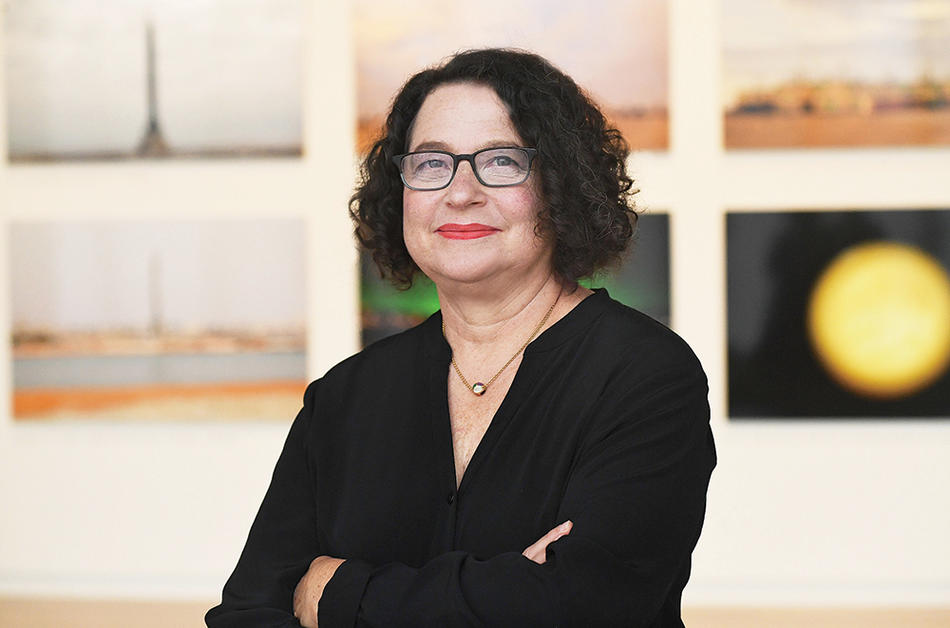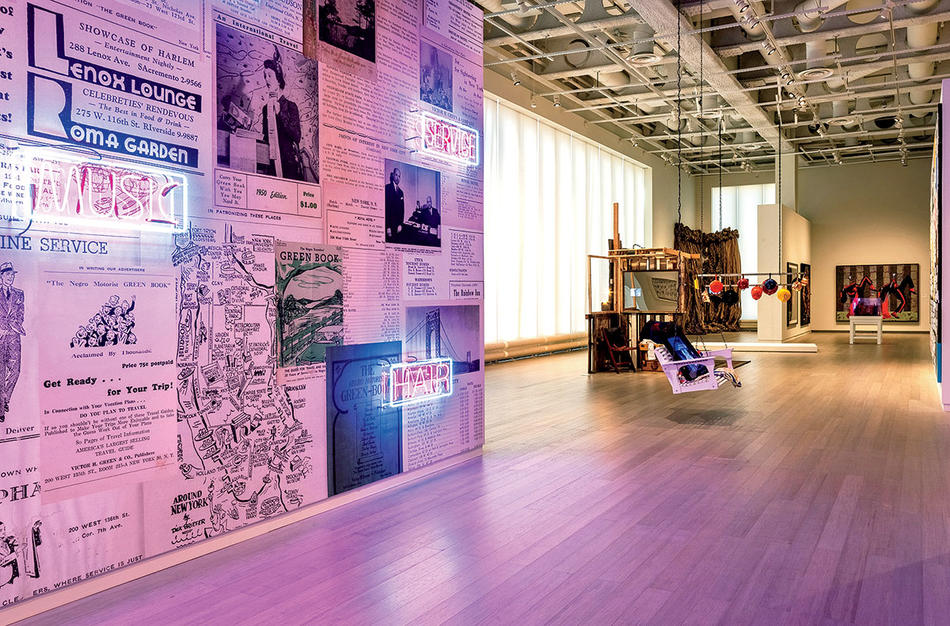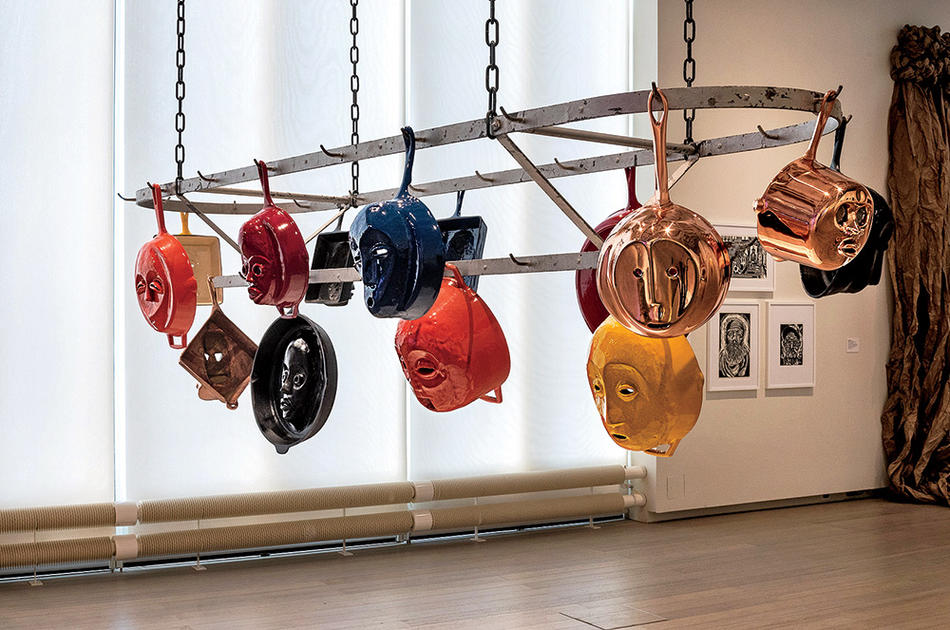Last March, when COVID-19 shut down the Wallach Art Gallery at the Lenfest Center for the Arts, Betti-Sue Hertz was already looking ahead. Hertz, who ran the Longwood Arts Project in the South Bronx for seven years and was later director of visual arts at the Yerba Buena Center for the Arts in San Francisco, joined the Wallach as director in September 2019. Six months into her tenure, the virus hit. The gallery went dark, yet Hertz didn’t hesitate to move forward with plans for the Wallach’s next show, Uptown Triennial 2020, on view through February.
“We were determined to get this show up, though we knew anything could happen,” Hertz says. The Wallach, which moved to Manhattanville from Schermerhorn Hall in 2017, is dedicated to bridging the academy and the community, and most of the twenty-five artists in Uptown live and work in Harlem and Upper Manhattan. Though the gallery has been closed to the public during the COVID-19 crisis, art lovers can take virtual 360-degree tours.
Hertz is now planning The Protest and the Recuperation, scheduled to open in June. The exhibit, which showcases artists from Malaysia, Sudan, Hong Kong, the US, and elsewhere, looks at both demonstrations and the strategies of activists to recover and regroup. “I’m interested in the aesthetics of protest, the visual and performative components that enliven what we’re seeing today,” Hertz says. “I think about that a lot in relationship to contemporary art.”
For Hertz, whose colleagues out west would joke that she was “too academic,” Columbia has been an ideal fit. “I felt welcomed and found that I speak the same language as a lot of my colleagues,” she says. A native New Yorker who has taught at Stanford and UC Berkeley, Hertz envisions collaborations with the University libraries as well as departments in the arts, humanities, and sciences. Recently, the Wallach featured a Zoom talk by English professor Robert O’Meally on the Harlem Renaissance vaudeville performer Johnny Hudgins, accompanied by the vibrant jazz-themed collages of Romare Bearden. In another virtual event called “Uptown Triennial 2020 Town Hall: Building for the Future,” artists, scholars, activists, urban planners, and community leaders reflected on the possibilities of a post-pandemic, more equitable New York.
A painter and sculptor by training, Hertz brings intellectual inquiry into all her work. “I think of curating as knowledge production, not just a decorative entertainment,” she says. She also insists that the exhibitions be “relevant and timely” — which doesn’t necessarily mean that the art itself has to be contemporary. “All art was contemporary when it was made,” says Hertz. “It’s part of a continuum.”
That continuum stretches into the future as well as the past: Hertz was at work on The Protest and the Recuperation well before the mass protests of 2020. The 2017 Women’s March had gotten her thinking about protest and democracy. “That’s the trick of being a curator — projecting into the future and hoping you’re right.”
This article appears in the Winter 2020-21 print issue of Columbia Magazine with the title "Art Won't Wait."





